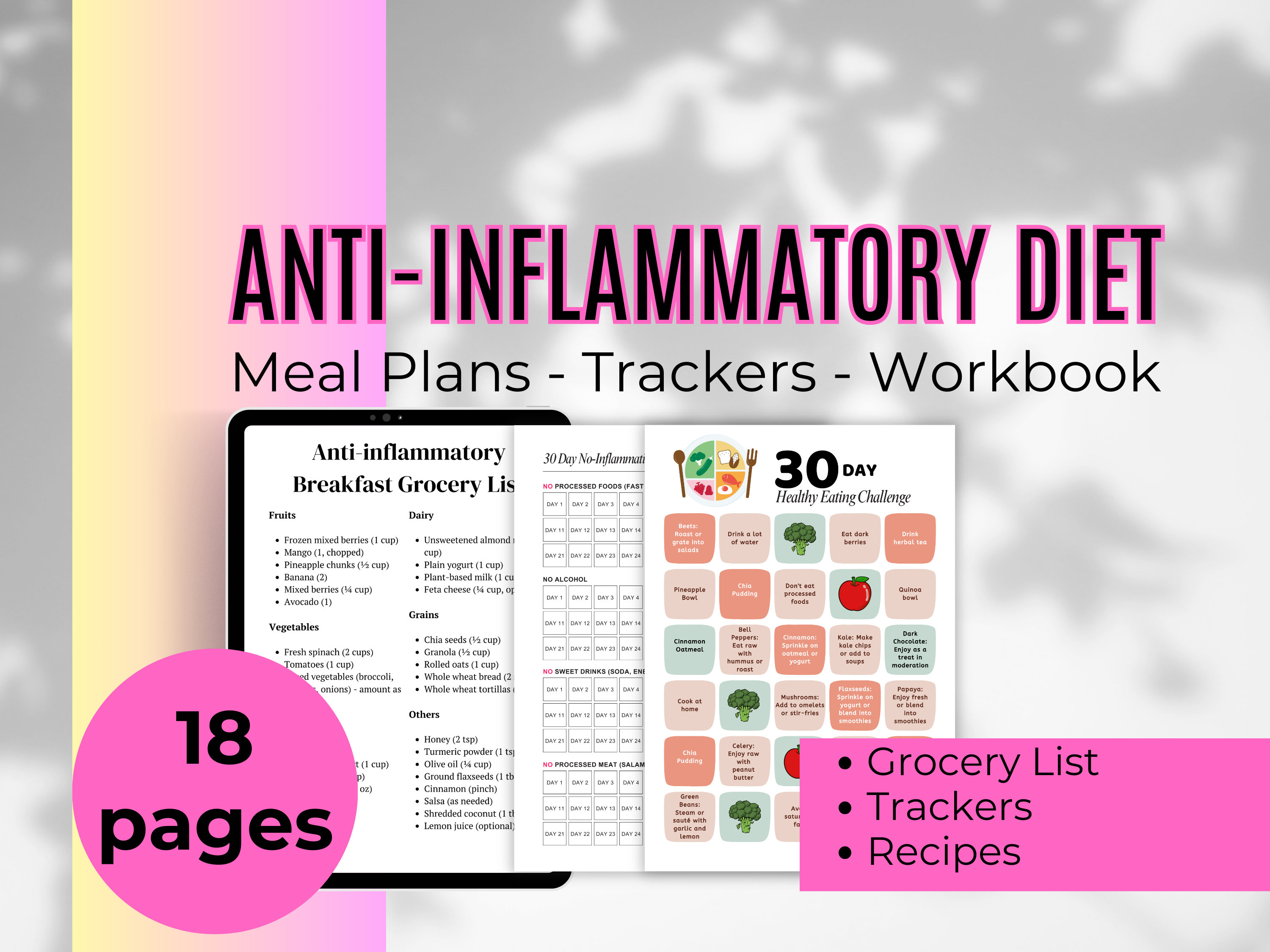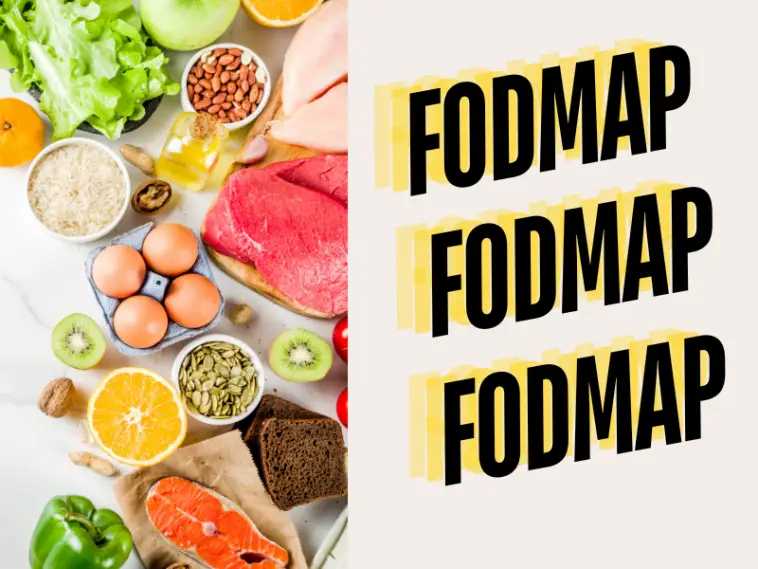Ever heard of FODMAPs? No, it’s not some new trendy acronym—it stands for Fermentable Oligosaccharides, Disaccharides, Monosaccharides, and Polyols. These are types of carbohydrates that can wreak havoc on your digestive system, especially if you have irritable bowel syndrome (IBS).
Understanding FODMAPs
FODMAPs, an acronym for Fermentable Oligosaccharides, Disaccharides, Monosaccharides, and Polyols, refer to a group of short-chain carbohydrates that are poorly absorbed in the small intestine. This can lead to digestive issues such as bloating, gas, and abdominal discomfort, particularly in individuals with irritable bowel syndrome (IBS) or other gastrointestinal disorders.
FODMAPs, short for Fermentable Oligosaccharides, Disaccharides, Monosaccharides, and Polyols, are a group of short-chain carbohydrates that can wreak havoc on the digestive system.

- 2-Week anti-inflammatory meal plan.
- 45 Foods that Cause Inflammation
- 31 Things to Avoid on Food Labels
- Grocery Lists. Challenges. Symptoms Tracker
In the small intestine, FODMAPs are poorly absorbed due to their short-chain structure. This malabsorption leads to them traveling further down the digestive tract into the large intestine, where the real trouble begins. Once in the large intestine, FODMAPs become a feast for the resident gut bacteria, resulting in fermentation.
This fermentation process produces gases and other byproducts that can cause a range of unpleasant symptoms. Bloating, gas, diarrhea, constipation, and abdominal pain are just a few of the common complaints triggered by FODMAP consumption. These symptoms can vary in intensity from mild discomfort to severe distress, depending on individual sensitivity and the amount of FODMAPs consumed.
The concept of FODMAPs and their impact on gut health was first introduced by researchers at Monash University in Australia. In the early 2000s, a team led by Professor Peter Gibson and Dr. Sue Shepherd developed the Low FODMAP Diet as a potential solution for managing IBS and other digestive symptoms, specifically:
- Irritable Bowel Syndrome (IBS)
If you find yourself constantly battling bloating, cramps, or unpredictable bathroom trips, you might be a prime candidate for the FODMAP diet. This diet can be a life raft for those diagnosed with Irritable Bowel Syndrome, offering relief from the discomfort and uncertainty that often plagues IBS sufferers. By understanding the specific triggers and making strategic dietary adjustments, individuals with IBS can often regain control over their digestive woes.
- Other Gastrointestinal Conditions
Conditions like Small Intestinal Bacterial Overgrowth (SIBO) and other functional gastrointestinal disorders can also benefit from this approach. By honing in on problematic FODMAPs, individuals with these conditions may discover a newfound sense of digestive harmony and reduced symptoms.
The Elimination Phase of the FODMAP Diet
The elimination phase of the FODMAP diet is a crucial step in identifying dietary triggers that exacerbate symptoms of irritable bowel syndrome (IBS) and other functional gastrointestinal disorders. This initial phase involves the strict removal of all high-FODMAP foods from the diet for a specified period, typically lasting between 4 to 6 weeks. Here, we will delve into the goals, process, challenges, and tips for successfully navigating the elimination phase.
Goals of the Elimination Phase
The primary objective of the elimination phase is to significantly reduce or eliminate symptoms associated with IBS, such as bloating, gas, abdominal pain, diarrhea, and constipation. By removing high-FODMAP foods, which are known to be poorly absorbed and rapidly fermented by gut bacteria, the digestive system gets a chance to ‘reset’. This phase allows for a clearer assessment of the individual’s response to FODMAPs, thereby providing a baseline for symptom control.
-
- Create a List: Utilize resources such as Monash University’s FODMAP guidelines to create a comprehensive list of high-FODMAP foods to avoid. Common high-FODMAP foods include certain fruits (apples, pears), vegetables (onions, garlic), dairy products (milk, yogurt), grains (wheat, rye), and sweeteners (honey, high-fructose corn syrup).
- Substitute with Low-FODMAP Options: Replace high-FODMAP foods with low-FODMAP alternatives. For instance, swap apples with strawberries, and use lactose-free milk or almond milk instead of regular cow’s milk.
- Monitor and Record: Keep a detailed food diary to track everything you eat and drink, along with any symptoms experienced. This helps in monitoring progress and identifying potential trigger foods.
The Reintroduction Phase of the FODMAP Diet
The reintroduction phase of the FODMAP diet follows the elimination phase and is critical for pinpointing specific dietary triggers that cause gastrointestinal symptoms. During this phase, previously eliminated high-FODMAP foods are gradually reintroduced into the diet in a structured manner.
In the Reintroduction Phase, specific high-FODMAP foods are reintroduced gradually, one at a time, in controlled portions. This systematic testing allows individuals to pinpoint which FODMAPs they can tolerate and in what quantities. It is recommended to reintroduce one FODMAP group at a time, such as fructose, lactose, fructans, galactans, and polyols, while monitoring symptoms closely.
Process of the Reintroduction Phase
-
- Select a FODMAP Group: Begin with one group of FODMAPs (e.g., fructose, lactose, fructans, galactooligosaccharides, polyols).
- Choose a Test Food: Pick a food that contains only the FODMAP group being tested. For instance, use honey for testing fructose or milk for lactose.
- Start with a Small Portion: Introduce a small amount of the test food on the first day. Gradually increase the portion size over a few days while monitoring symptoms.
- Record Symptoms: Keep a detailed diary of foods consumed and any symptoms experienced. Note the type, severity, and timing of symptoms.
- Observation Period: After testing a FODMAP, return to the strict low-FODMAP diet for a few days to clear symptoms before testing the next FODMAP group.
- Interpreting Results:
- Symptom Tracking: Identify which foods or FODMAP groups trigger symptoms and which are well-tolerated. Symptoms may vary in intensity, and some FODMAPs may cause delayed reactions.
- Tolerance Levels: Determine tolerance thresholds for each FODMAP group. Some individuals may tolerate small amounts of certain FODMAPs but not larger quantities.
During the Reintroduction Phase of the FODMAP diet, the goal shifts from strict avoidance to a structured reintroduction of high-FODMAP foods. This phase is crucial for identifying individual tolerance levels and personal triggers. To navigate this phase effectively, a systematic approach is key.
Remember, embarking on the low-FODMAP diet is a journey, not a sprint. With the right resources and support system in place, you can navigate any challenges that come your way and ultimately improve your digestive system for the better. Stay committed, stay informed, and stay connected – you’ve got this!





